Are you heading to Morocco? You will want to rent a car and experience the many amazing and exotic things to see, do, and experience on a Morocco 10 day road trip. Follow this itinerary, have a blast, and don’t miss a thing!
As you know, we love escaping to Northern Africa during our cooler months. We’d already explored Tunisia and Egypt, so we decided it was finally time to go to Morocco. The only thing holding us back was the hype.
Everyone goes to Morocco. It’s very popular. Would we be as happy tooling around there as we were in Tunisia? We weren’t sure. What we did know is it was time to bite the bullet and do a Morocco road trip.
What to Expect in this Article
We want to make sure you have a good plan before embarking on your trip to Morocco, so we’ve gathered some great info for you.

Best Morocco Itinerary – 2 Weeks
Loving a good road trip like we do, we picked up our rental car after a couple of days spent exploring Marrakesh. We stopped at so many great sites, cities, and beautiful spots along the way.
Morocco hosts mysterious souks, the vast Sahara, ancient Roman ruins, and lots of cities and medinas to wander, and that’s just what we wanted to do…and spoiler alert…we loved it.

The best places to visit in Morocco:
- Marrakesh
- Aït Benhaddou
- Essaouira
- El Jadida
- Casablanca
- Rabat
- Chefchaouen
- Fez
- Volubilis
- Meknes
- Azrou
- Berber Cultural Center

Marrakesh
Our first step into the country of Morocco, Marrakesh lived up to all of our expectations. It was all at once crowded, hard to navigate, filled with new and unfamiliar smells, busy traffic, and a completely different feel than traveling in the States or Europe.
This is what you come to Northern Africa for…a completely different experience, a glance into other people’s lives unlike our own. And oh, such good food!
Marrakesh is a great mix between modern and traditional, and there are tons of things to do to keep you busy during your stay. In the capital city of Marrakesh, we enjoyed the Saadien tombs, the ruins of the Bahia Palace, and of course the food stalls of the Jemaa el Fna.

Aït Benhaddou
A mud city built in the High Atlas Mountains, we’ve never been to anything like Ait Benhaddou before. As we crossed the river by foot, and climbed through the streets to the top, we marveled at the architecture and materials used.

Essaouira
Essaouira is a stunning coastal city complete with pristine Atlantic beaches, a busy harbor filled with deep blue fishing boats, and a bustling souk. It’s a fantastic destination. If we had stayed longer, we would have taken advantage of the cooking lessons on offer.
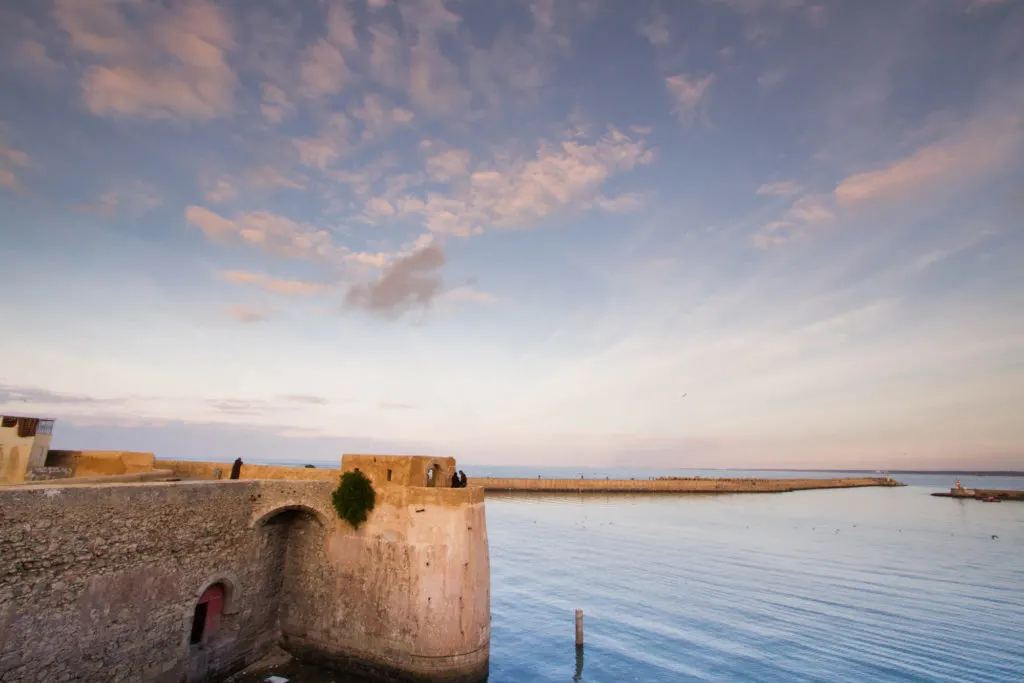
El Jadida
El Jadida is probably the city that surprised us the most. It’s a little out of the way, and although it is a Unesco World Heritage Site, it’s not overly touristy. We loved staying in the old town, walking the walls at sunset, and enjoying the red fishing boats in the harbor.
Casablanca
Not only is Casablanca one of the best-known cities in Morocco, but it’s also closer to one of the biggest airports. It’s a huge city with many things to do. For us, we were looking for more bucolic experiences, so we limited our time there to a visit to the gorgeous Hasan II Mosque and, believe it or not, a Christmas market; then we were on our way.

Rabat
The capital city of Rabat is a great place to start a trip if you fly in there. We stopped on our way back from Chefchaouen as we were starting to drive along the coast. In Rabat, we visited the King’s Palace, Dâr-al-Makhzen, with its colorful guards and geometric architecture was really a thrill.
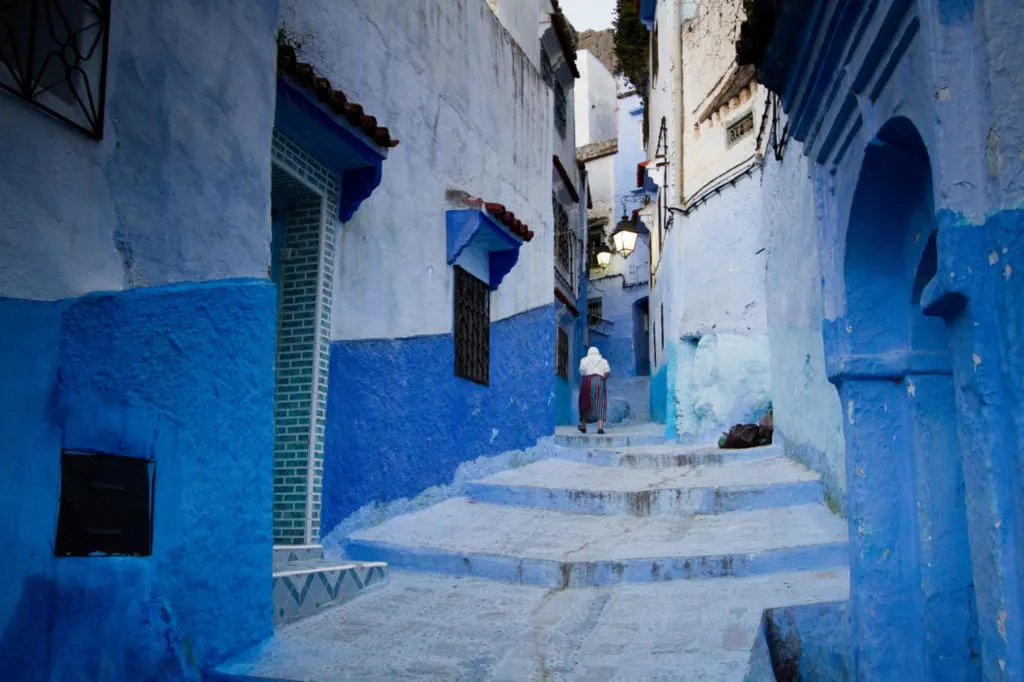
Chefchaouen
The blue city, Chefchaouen, has firmly entrenched itself as a city for tourists since Instagram is filled with mesmerizing photos of the houses, city buildings, and bakeries in shades of blue. We stayed for one night, enjoying a great dinner and taking many photos. It, too, lived up to our expectations and we loved it.
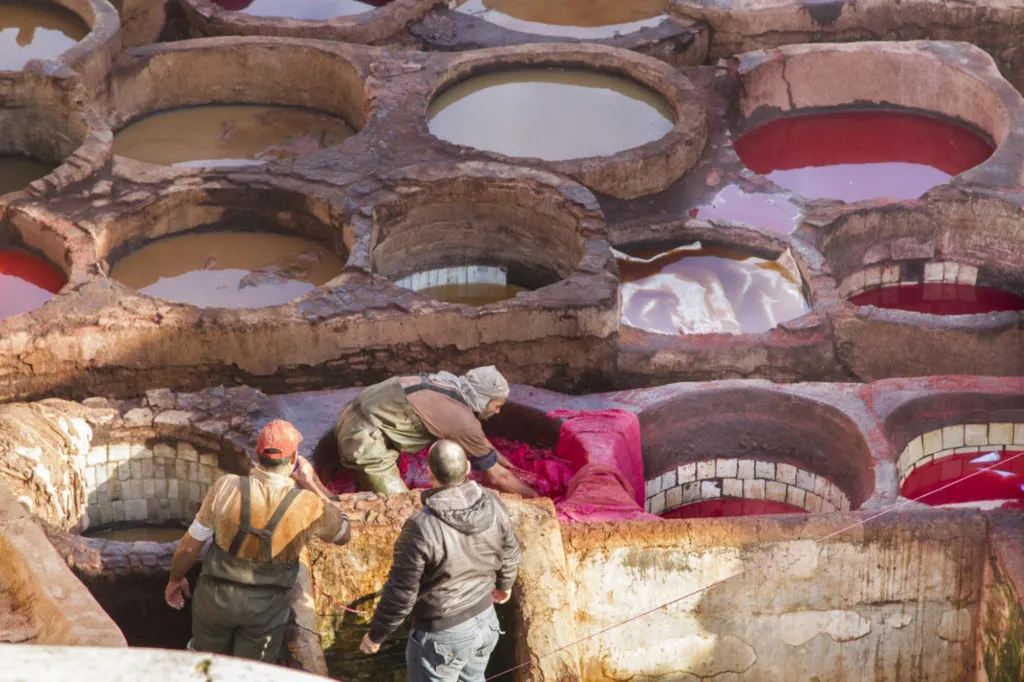
Fez
Thanks to social media again, we were excited to visit Fez and especially its vibrant tanneries. We spent about half the day, trying to switch from holding our breaths to taking those breath-taking photos of the colorful leather dyeing pits.
No matter what anybody tells you, regardless of all the warnings, nothing can possibly prepare you for the smell of those pits.
In the afternoon, we couldn’t pass up the souk and medina. It is definitely one of the prettiest and most authentic marketplaces, and if you want to buy some leather goods it’s the place to do it.

Volubilis
Out in the farm fields south of Meknes, lies an archaeological surprise. The ruins of the Ancient City of Volubilis takes up over 100 acres, and is full of old Roman houses that still have amazing mosaics intact. It’s well worth a few hours of exploration.
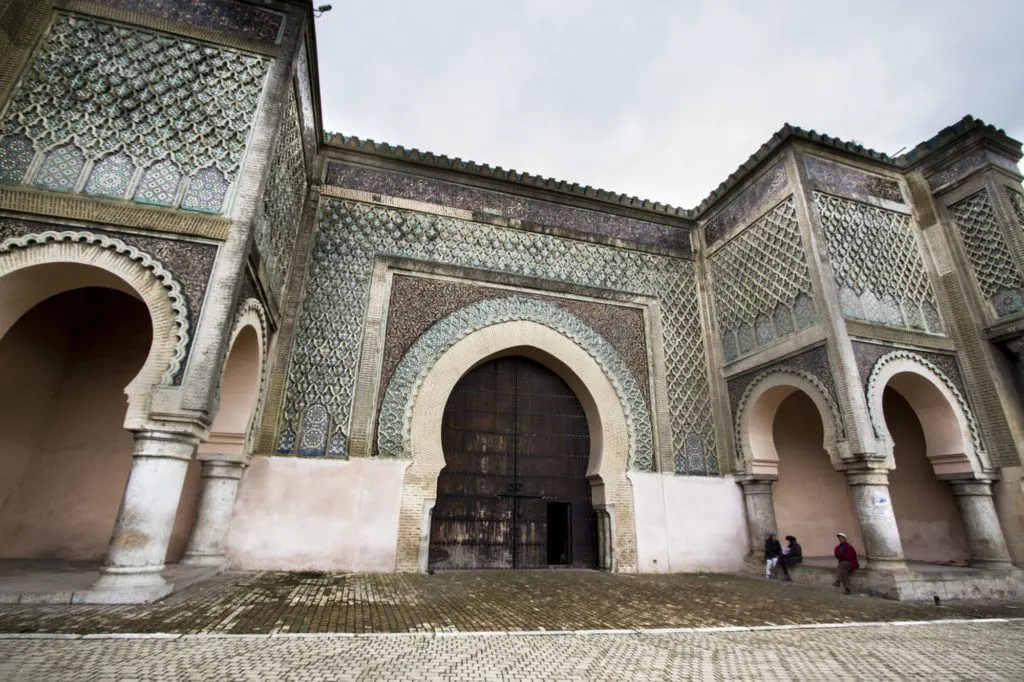
Meknes
One of the four imperial cities, Meknes is too often missed on a trip to Morocco. As it is, we went, but we didn’t commit enough time to really see all of its majesty. It is firmly on our list to spend more time in when we go again.
We did enjoy the Bab Mansour, a huge, elegant and even dazzling gate to the city along with El Hadim Square which really comes alive during the evening.
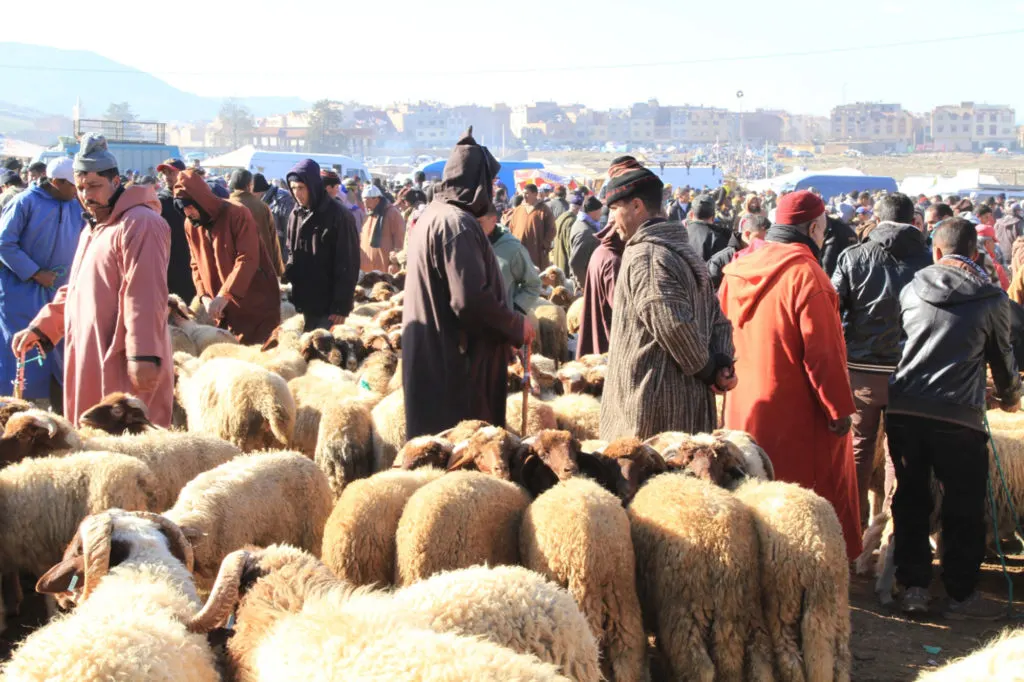
Azrou
Apparently well-known for its Barbary Apes which we didn’t see, we sought out Azrou for its weekly Berber market. We spent the night in the city center on Monday.
Then on Tuesday, along with throngs of people, we walked out to the marketplace. Even after living years in Turkey and visiting local bazaars on almost a weekly basis, this is one of the largest, most interesting markets we’d ever seen.

Berber Cultural Center
A place for foreigners to experience a little local culture, we’d heard of the BCC from other bloggers who’d had a fantastic time there. We made an effort to go; and, while there, really enjoyed learning about baking bread, making a local lunch, and of course learning the secrets of Moroccan tea.

FAQ on Morocco
Where is Morocco located?
Morocco is located in Northern Africa and is bordered by Western Sahara and Algeria. Its neighboring countries are not that hospitable, however one thing that makes Morocco such a draw is the 1200 miles of coastline.
Tourists love to find a great resort and soak up that Moroccan sun. Couple that with the amazing food and hospitality, you just can’t go wrong.
As you know, we are not big beach people, but we love a road trip. And guess what? Morocco is the perfect place for a road trip!

Is Morocco Safe?
I’m not sure I like this question. Did I feel safe in Morocco, yes. During our entire stay we never had an untoward incident or even felt there was any animosity from the locals.
Is any country 100% safe anymore? There has been some terrorist activity in the country in the past, as there has in the U.S., France, the U.K. Unfortunately terrorist activity has been everywhere.
Therefore, it is pertinent to always check the latest updates from your government source. Jim and I diligently read the country’s write up in Travel. State. Gov. for the latest information.
I find the write ups to be cautionary and remind us how to pay attention to our surroundings as well as being aware of where the hot spots are.

What is Morocco Famous for?
For many Americans, at least, Morocco was made famous from the old black and white movie Casablanca. It showed an exotic locale with chaotic souks, men in djellaba (local clothing), sheep and goats in the streets, and to us westerners, a whole new world.
Guess what? Since that movie was released years and years ago, Morocco has not changed that much! So yes, it’s great destination.
Morocco is famous for all kinds of things like:
- Labyrinthian souks and medinas
- Gorgeous Islamic architecture and tiles
- Homemade items, like leather slippers and copperware
- Stunning riads to stay in
- Expansive deserts
- Exotic cuisine
- Fantastic beaches
- Tatouine – a Star Wars movie set

Do You Need a Visa for Morocco?
No visas are required for Americans who visit for 90 days or less, and that is plenty of time to really explore the country. We feel like we saw a good portion of it in just two weeks.
When is the Best Time to Go to Morocco?
Most people recommend going to Morocco in September through November, which is still quite warm. It’s warm enough for swimming, and cool enough not to bake. I do think these are great times as well, avoiding the summer high season and the throngs of tourists.
However, I think it really depends on the kind of travel you will be doing. If, like us, you are not interested in lying on the beach or swimming, then you could enjoy December and the early part of the year as well.
Morocco does get somewhat cold. The coldest month is January with an average temperature of 55 degrees Fahrenheit. For me, this means bringing good layers of clothes like a fleece and a rain jacket.
It’s not so cold to hinder touring or even require a heavy jacket. In fact, since the daytime temps are closer to the mid-60s to low-70s it is quite comfortable wandering around old ruins, souks, and harbors.
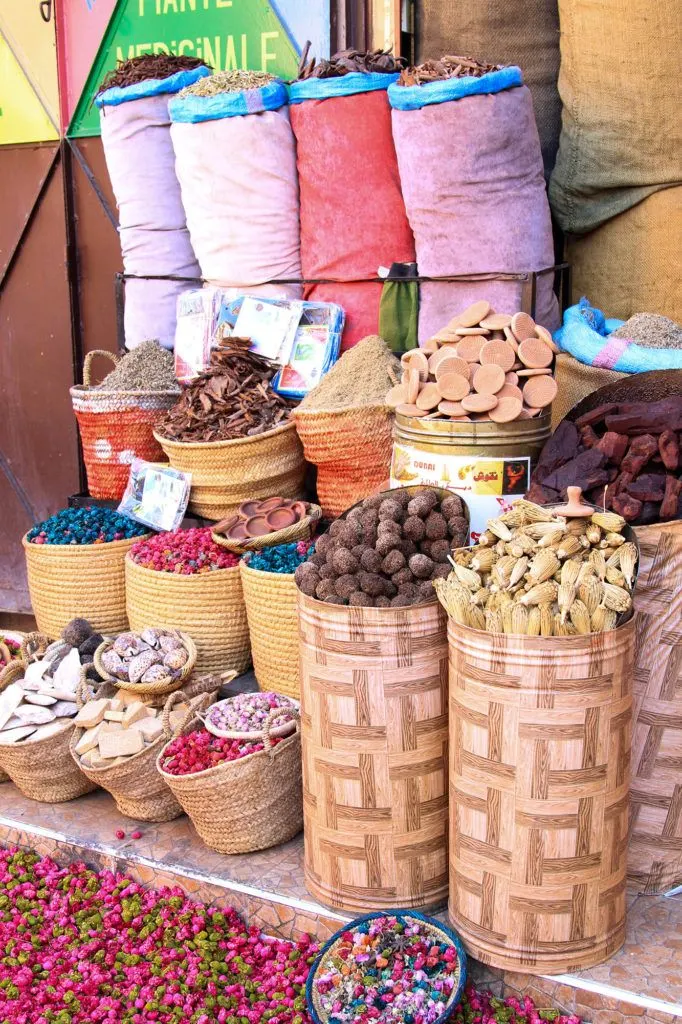
How Much Time Do You Need in Morocco?
If you only want to get a small taste of Morocco and head to only one of the major cities such as Tangiers, Fez, or Marrakesh then a weekend will suffice.
Although if you would like to see more, I would suggest at least one week. This will allow you to visit a couple of places.
For beach goers who also want to spend some time touring, I would suggest a minimum of two weeks, but probably more like three. Thankfully Morocco is a rather cheap destination, so it won’t hurt your budget too much.

What Our Favorite Thing Was
There really is a lot to love about this country and we can completely see how it has become such a popular place to visit. From the colorful markets to the green countryside we really enjoyed it all.

Jim and I love a great cooking experience. So probably our number one favorite thing we did was visiting the Berber Cultural Center. There we learned a lot more about Moroccan cuisine. Getting in the kitchen, or in this case on the rooftop, we learned how to make an authentic chicken lemon tajine for our lunch.
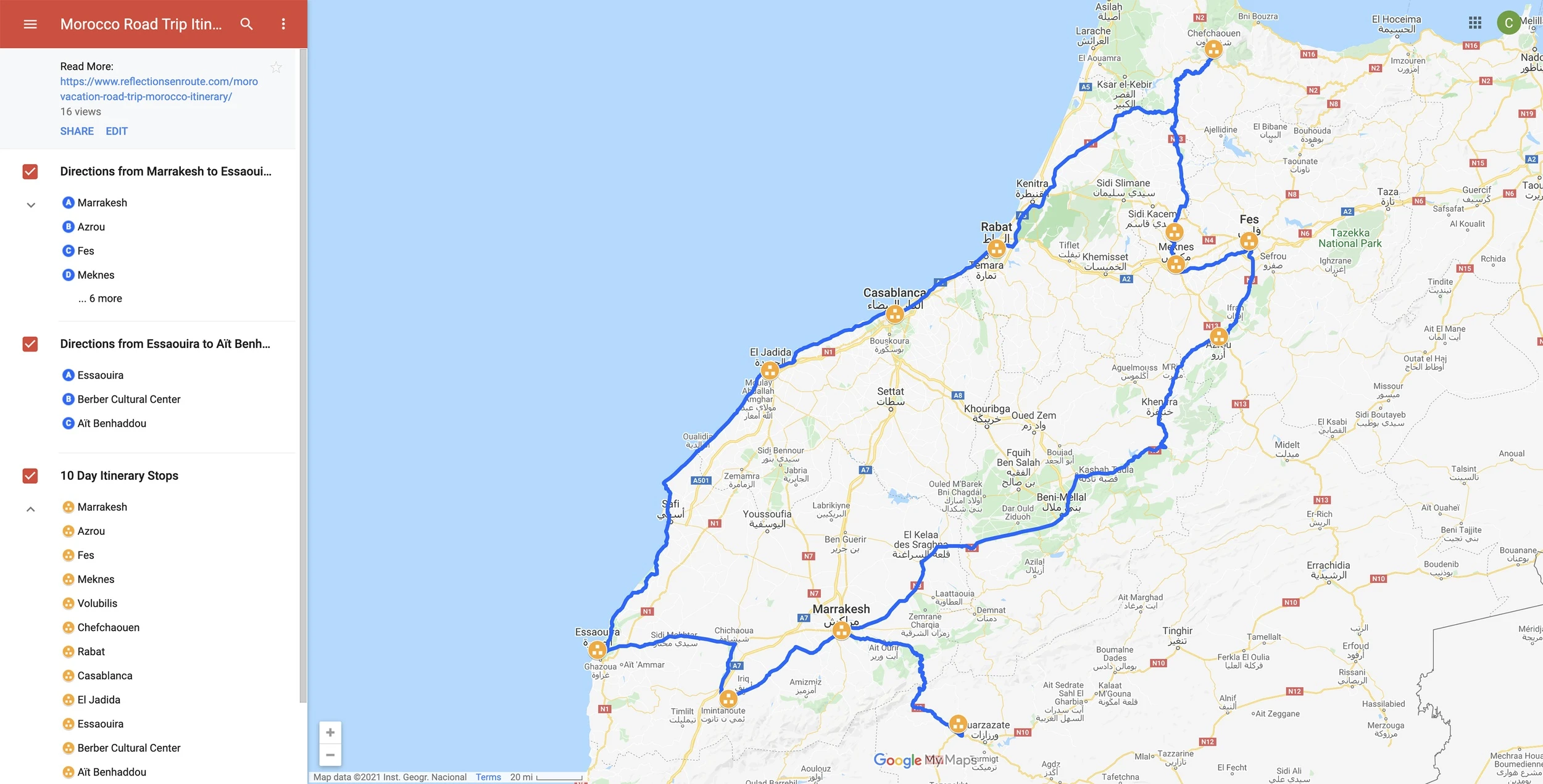
Driving in Morocco
Anytime we start talking about a new trip with our friends they are always excited to hear about it. Of course, Morocco was no different. “How exciting! “How exotic!”
But when we mention that we’ll be doing a road trip through the country these exclamations of excitement change. “Are you crazy?!?” “That’s madness!”
It’s true, driving in developing countries like Morocco can seem daunting and might not be for everyone. However, a quick check of the US State Department’s Morocco information page, shows exactly what to expect.
Yes, driving in Morocco can be dangerous–just as driving in the US is dangerous–but with some sensible precautions and a healthy dose of common sense, renting a car and taking the wheel, adds an exciting and enjoyable element to the adventure.

Road Conditions and Hazards
The most important thing to know about driving in Morocco is that there will be hazards, pitfalls, and disruptions along the road. Expect to encounter all manner of transportation and livestock.
Donkey carts, bicycles, motor vehicles that should have stayed in their junkyard, overloaded cargo trucks, and reckless taxis will be sharing the road with you.
Drive defensively, expect the unexpected, and never, ever, drive at night. Every possible hazard is exponential magnified as day turns to dusk and then to night.
Make sure your car is in good mechanical shape. Check the tires, mirrors, windows, lights, and brakes regularly throughout the trip.

Speeding
Outside of Marrakesh I noticed it was getting harder and harder to shift gears in our little rental car. As I was struggling with the gears around a sweeping turn in some small town, I looked out just in time to see a police car up ahead on the side of the road.
A quick check of the speedometer put a large pit in my stomach. We were doing 70 kph in a 60 zone. I had been driving particularly careful as I had seen many such traffic stops along the road but the distraction of the clutch and grinding gears had gotten the better of me.
Sure enough, we were flagged over. I got out of the car with passports, car papers, driver’s license and a friendly smile. We chatted for a little bit, the young uniformed man speaking French and I in English.
Not being overly successful communicating, I was able to get the point across that we were tourists and Morocco was a beautiful country. The officer was very polite and smiled when we complimented Morocco, but sadly, we would have to pay a fine.
Luckily I had the cash in hand and he wrote a receipt and put us back on our way. I made it to the car and got it into gear before I realized he did not give me back all of the papers. There was one card that came in the car papers that I was sure was pretty important.
When I went back to try and explain that he made a mistake (of course not quite in those terms) he smiled and nodded but didn’t seem to understand. It took a little effort but he soon got the idea and found the card tucked up under another piece of paper on his clipboard. Disaster averted, we were now truly back on the road, grinding gears all the way.
One thing we’ve learned driving all over the world is smiling and trying to understand goes a long way. I was in the wrong. I was speeding, so I had to pay a ticket. No big deal. It’s definitely important to know the rules of the road.
Navigation and Directional Signs
Generally speaking, Google maps did a great job of getting us from city to city. It usually worked for finding sites within the city; however, it had a nasty tendency to take us on routes through pedestrian-only medinas and alleyways too narrow for even our small car to navigate.
Road signs are haphazardly placed along most routes, and not at all on smaller roads. We also used an excellent Michelin map that included a road sign that let us know about roads that weren’t suitable for our little car. In addition it helped us locate some sites that weren’t in Google Maps.
If you are familiar with the standard international road signs used around Europe and parts of Asia, then you will feel right at home on Moroccan roads.
For those of you not familiar with these signs, don’t fret, they usually make a lot of sense. You could, however, visit this wikipedia entry on road signs to familiarize yourself before hitting the open road.
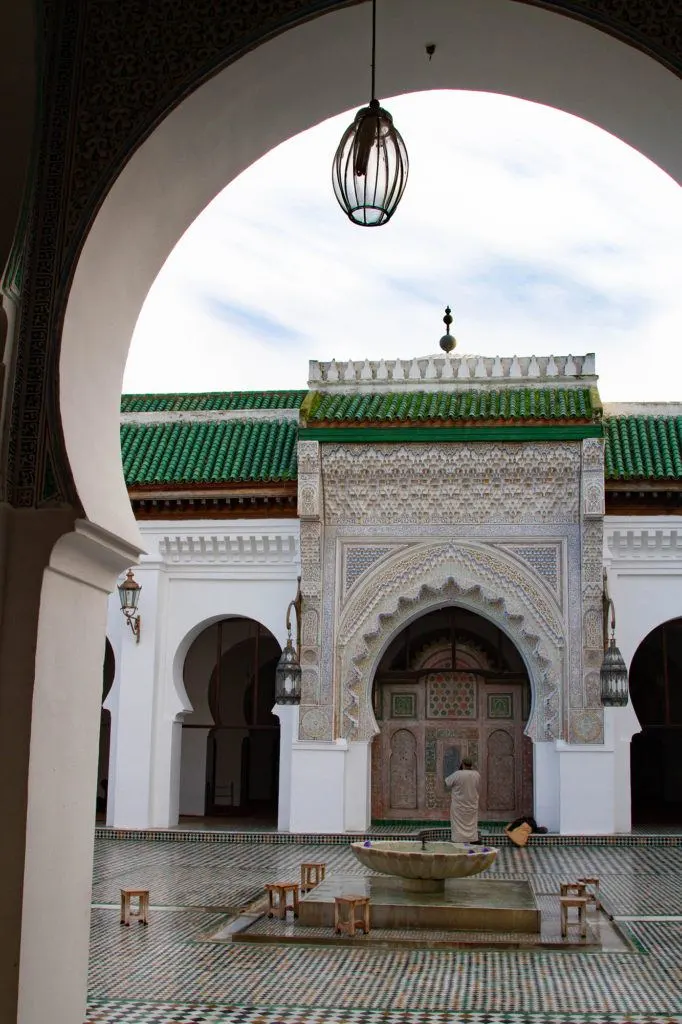
Parking
As you can imagine, it’s extremely difficult to park in many Moroccan cities, especially in a souk or central area. However, just a little outside the busiest parts of town, we were always able to find parking. Some with a cost, but most without.
There are parking meters and parking ticket dispensers on many city streets. They are easy to operate.
In other areas, there are attendants in blue vests that will take your parking fee and issue a ticket to place on your dashboard. Finally, check with your hotel or riad for overnight parking.

What to Eat in Morocco
You cannot go to Morocco without eating a tajine meal. Tajines are a clay pot composed of a lipped plate on the bottom with stovepipe-shaped lid. This allows the meat, usually chicken or lamb, to cook in its steam making it and the accompanying vegetables super tender.
Conclusion
There is so much more to Morocco than Marrakesh or Fez. You will not regret taking the time to visit some lesser known destinations like Volubilis, Meknes, and Essaouira.
As the sun was setting on our last night in this magical country, we were so happy that we decided to visit. We loved it all and hope that you will too when you visit.
Author Bio: Corinne Vail is a travel photographer, food lover, and a perpetual traveler who has been travel writing for over 14 years. For many years she lived overseas in Germany, Japan, Turkey, South Korea, and the Netherlands teaching the children of the US. military. She’s visited over 90 countries, and she’s not stopping anytime soon.

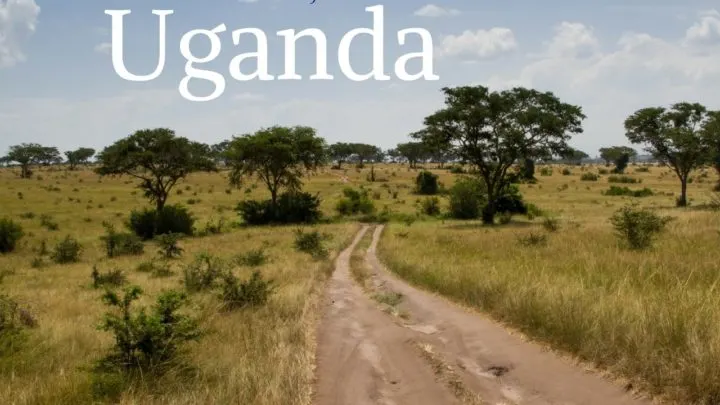
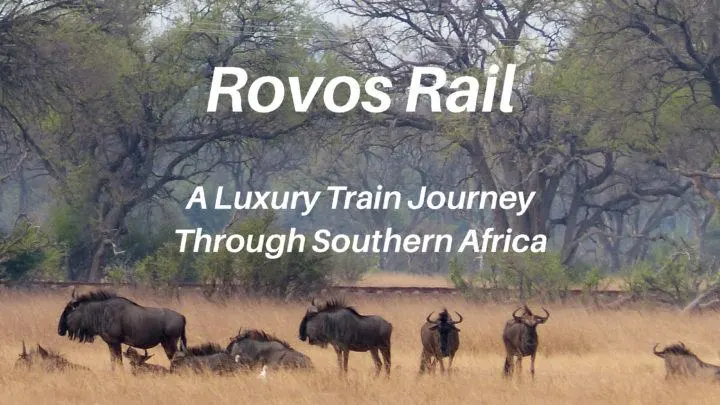





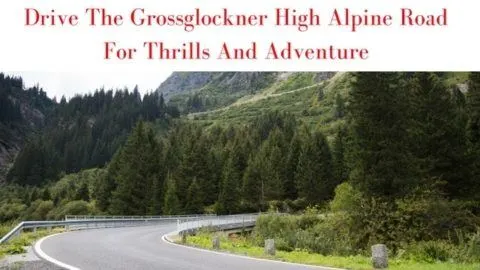





Heidi
Thursday 18th of May 2023
Really loved your itinerary and travelogue! Am I allowed to ask questions so I can make my own intinerary?
Corinne Vail
Friday 19th of May 2023
Hi Heidi, Of course you can ask questions. The best place to do that is in our private Facebook group where we share lots of travel info. Please go to Streets and Eats.